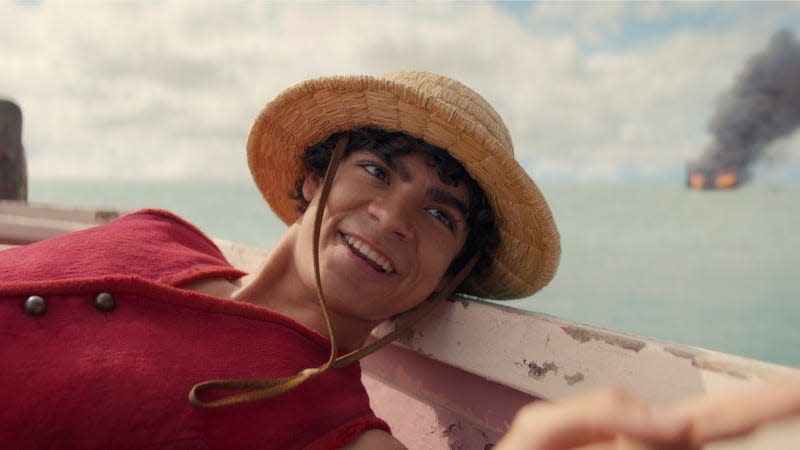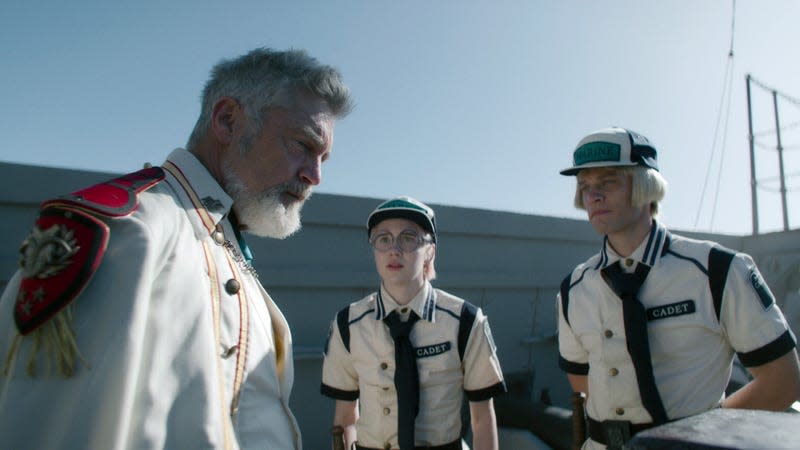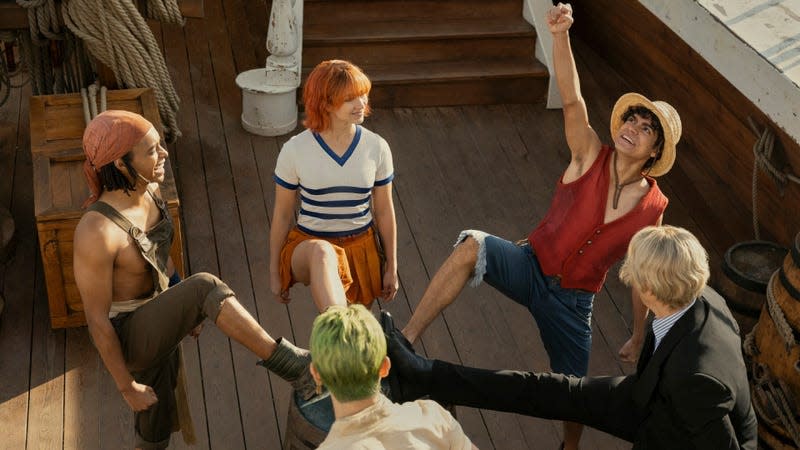Netflix’s One Piece Live-Action Series Delivers More Than It Disappoints

One Piece is a series built on lofty promises. Chief among them: that its hallowed treasure, which still has yet to be revealed since the series began 26 years ago, will be worth the journey; that protagonist Monkey D. Luffy will someday fulfill his dream of becoming the king of the pirates; and that its long-running manga series and intimidatingly long anime will ultimately end on a satisfying note. The release of Netflix’s One Piece live-action series adds yet another promise to the series’ tab—the promise that, in being adapted to live action, it will emerge as one of the good ones, avoiding the dismal fate of so many anime that have made that journey before. The show doesn’t completely succeed in keeping this promise, but it makes a decent if uneven first impression, beckoning long-time fans and newcomers alike to stay aboard and see where it could go next.
Read More: Every Upcoming Hollywood Anime Live-Action Adaptation That’s Got Fans Stressed
Read more
Designer Says The Only Way To Fix The Cybertruck Is To Scrap It And Start Over
You Don't Need A Massive Battery, Or Fast Charging To Give Up Gas
India's Moon Mission Uncovers Key Findings at the South Pole
The first season of the One Piece live-action series, which covers the major story beats from the start of the manga’s opening East Blue saga up until the conclusion of the Arlong Park arc, sees Luffy assemble his pirate crew as they set sail to find Gold Roger’s titular hidden treasure. The show covers a lot of ground, especially when you consider that it’s condensing what would be 93 chapters (or roughly 17 hours of anime) into eight hour-long episodes. The result is an occasionally clumsy show that opts to streamline major story beats by dual-tracking arcs together in a single episode, thus giving fans who felt intimidated by the manga and anime’s lengths a gateway into Oda’s grand world.
And while it leaves a bit to be desired, the Netflix One Piece is one of the rare well-made live-action anime adaptations. The show is full of heart, from its vibrant set and wardrobe designs to the disarmingly charming found-family dynamic that the live-action crew so effectively exudes.
Read More: I Just Read 1,025 Chapters Of One Piece, And It’s A Damn Masterpiece

What Netflix’s One Piece live-action series does right
What surprised me most about Netflix’s One Piece live-action series is how it deviates ever so slightly from being a rote, SparkNotes summary of the source material’s first major arc by adding its own original wrinkles to Oda’s epic, allowing one of the series’ subtler relationships—that between Admiral Garp (Vincent Regan) and marine recruit Koby (Morgan Davies)—to take center stage.
Throughout the season, the show balances this thread with the cat-and-mouse chase of the Marines pursuing the Straw Hats as they sail toward the Grand Line. While manga and anime One Piece enjoyers like myself know the pair eventually develop an unbreakable bond, we never get to see how the relationship between the fearsome admiral and the former pirate takes root outside of a few stray manga panels interspersed between latter arcs in the series. Thankfully, the Netflix series is more than willing to dedicate time to depicting the humble beginnings of their wholesome friendship.
Throughout the live-action series, Garp instills agency in Koby by teaching his subordinate that he should get out of his own head and trust his gut instincts. In one of the earlier episodes, Garp instills this lesson in Koby over a game of Go, which Koby proceeds to best Garp in after accepting his advice. While innocuous on the surface, this scene serves to fill in the anime’s gaps in Koby’s sudden and awesome character development, as he goes from being a timid coward to one of the Marines’ bravest heroes.
This all comes to a head when Koby chooses to defy Garp’s orders to detain Luffy because he believes his friend is a good pirate—something marines are indoctrinated into believing doesn’t exist. Instead of chastising Koby, Garp praises him for being honest with himself and doing what he thought was right.
Rather than feeling like filler or glorified fan fiction, Garp and Koby’s conversations build upon the series’ long-running theme about throwing caution to the wind in the pursuit of one’s dream. For Koby, that dream is being a good marine.
While the series does an exceptional job of characterizing the dynamic of the Straw Hats’ burgeoning camaraderie, Garp and Koby’s flourishing relationship steals the show, and instilled a desire in me to see other relationships explored more deeply in the live-action series, should it get renewed for a second season.
Read More: Twitch Star Hasan Thinks One Piece Is Socialist (And He’s Right)

Netflix’s One Piece suffers from growing pains, but they aren’t deal breakers
That’s not to say that Netflix’s live-action series doesn’t make some sacrifices along the way. In the show’s slightly brisker pacing, which combines both origin stories and early character-defining arcs for characters like Sanji and Zoro, you miss moments of character development for Usopp and Luffy, who come off as one-dimensional bystanders to whatever scenes they accompany. This is particularly disappointing considering their manga and anime counterparts play a more active role in their crewmates’ arcs by having salient conversations about how their friends are feeling. Instead, the live-action pair are often delegated to onlookers who either incessantly comment about how strong their friends are or, worse, quip like Marvel heroes.
While the CGI in the live-action One Piece series is on par with what you’d see in Netflix’s Witcher series, I couldn’t help but feel a twinge of disappointment whenever the show attempted to recreate Luffy’s rubberman fighting style. Mind you, my disappointment wasn’t with how uncanny it looked, but how sparingly the series showcased Luffy’s devil fruit powers. Whenever he actually fights using his rubber man abilities, it’s contained in brief, tight camera shots, as if the showrunners were self-conscious about how goofy it might look to viewers. If anything, the series would’ve benefited from hanging on shots of Luffy going wild with his rubber man antics, especially considering the great first impression the show makes by displaying how effective Luffy’s Tom and Jerry-esque punches are at knocking folks out.
As a whole, the first season of Netflix’s One Piece live-action series is a satisfying start, one that’s faithful to the source material while adding its own fresh, welcome insights. Whether the show’s success eventually leads its live-action crew to sail to the sands of Alabasta, the clouds of Skypiea, or the impenetrable fortress of Enies Lobby has yet to be seen, but I hope to witness its efforts to live up to its promising first season.
More from Kotaku
Sony Hikes PlayStation Plus Prices by as Much as $40 Annually
Timothy Olyphant acknowledges that that big Justified: City Primeval twist required "caution"
Doctor Who Finally Confirms Its Mystery New Rose's Familial Connection
Sign up for Kotaku's Newsletter. For the latest news, Facebook, Twitter and Instagram.


